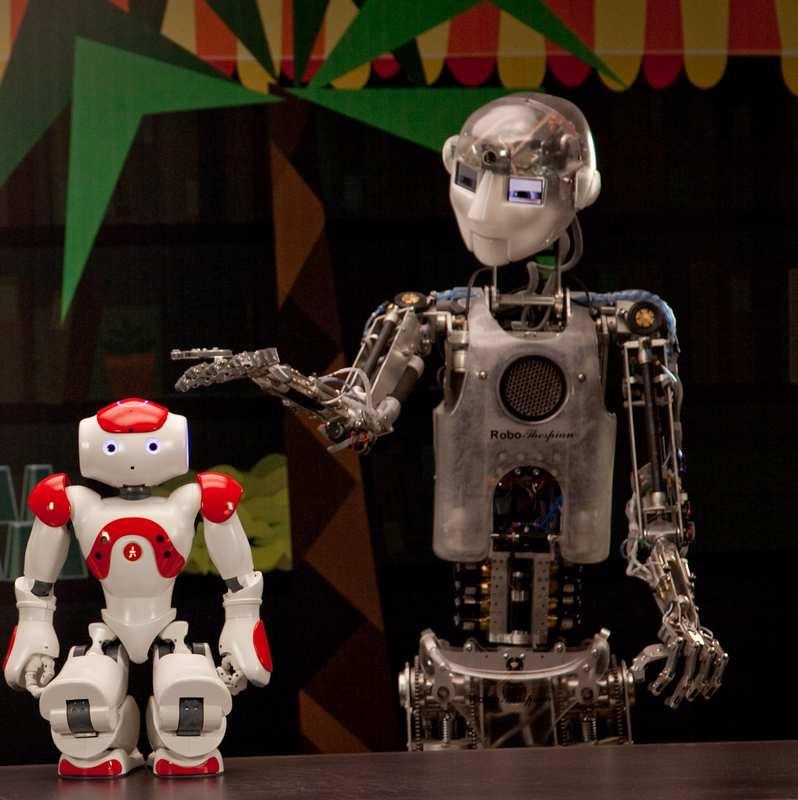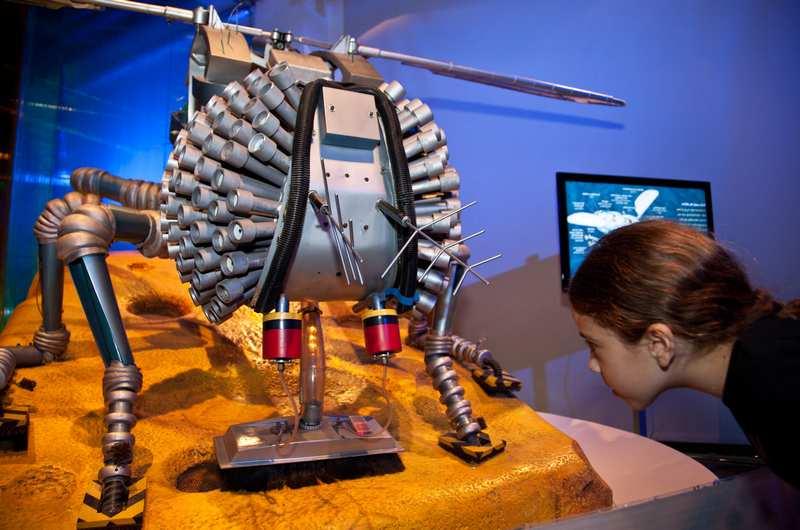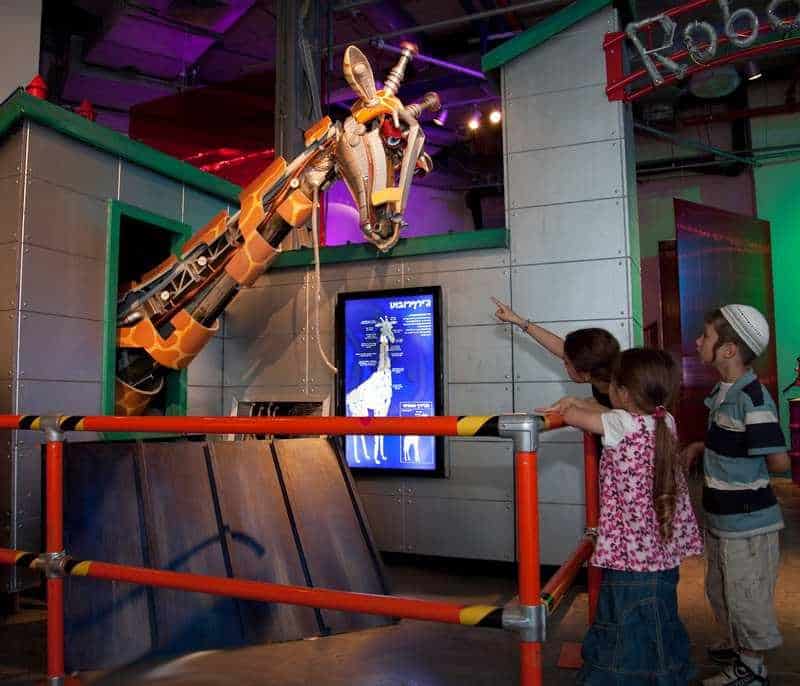The exhibition features a selection of large-sized robotic models of animals, including a chameleon, a rhinoceros, an octopus, a fly, and other larger-than-life animals. Each model illustrates the special structure and physiology of the animal using various technological tools

A new exhibition at the Madatech Museum in Haifa - Robot Zoo. This is an international exhibition that comes to Israel for the first time and presents a colorful and lively robotic zoo.
The ROBOT ZOO exhibition - presents a selection of robotic models, including a chameleon, a rhinoceros, an octopus, a fly and other larger-than-life animals. Each model illustrates, using various technological tools, the special structure and physiology of the animal and how it uses its various organs for actions such as movement, eating, hunting, etc. This is accompanied by illustrative exhibits and interactive experiences for children and adults.
In addition, it is possible to learn from the exhibition which technologies humans have discovered by studying the sophisticated biological mechanisms that work in animals. Like for example the sonar of the bat, the sticky legs of the insects and of course - the wings of the birds.
In addition to the fact that robots are "mechanical humans" in the imagination of science fiction writers and screenwriters, the robotic vision was an integral part of their works, and to this day - an era in which robots are used in various and varied fields in industry, entertainment and services. Robots were and are a source of inspiration for the future and a symbol of the attempt to humanize the machine.
The term "robot" itself is a concept whose definition is not absolute. The word robot was invented by the Czech science fiction writer Karl Chapek, who accepted the advice of his brother Josef to give the name to the forced laborers in the play he wrote: "Rossum's Universal Robots". The name robot is taken from the Czech word "robota" which means work.
Since then, the word has been widely used in science fiction literature, mainly following Isaac Asimov's book "I, Robot" in which he defined the three laws of robotics and the complex relationship between humans and robots.

In general, today the term robot is used as a general name for any automatic machine that independently performs operations that can be programmed in advance and can even identify its environment using sensors and choose appropriate methods of operation.
In contemporary culture, the robot is seen as a human-like machine and in many cases it is attributed human qualities that lead to an attitude that is more emotional and less rational.
The attitude towards robots moves on the axis that on one side has a strong affection for robots that "discover" the humanity within them. The humanized robot has to learn to get along in the complex world it is exposed to and even cooperate with humans and serve them through its high technological capabilities. The second attitude that robots receive in culture begins already with the story of the Golem from Prague and Frankenstein and continues to the terminator film series, where horror arises from cruel and emotionless machines whose goal is the destruction of the human race.
In the real world, the robot is seen as a machine that does work that is either boring, or difficult, or dangerous for humans. Such as actions that must be repeated with great precision many times a day in industry, handling dangerous materials, working in extreme conditions deep underwater and even traveling in space.
The professional terms that are used instead of and next to the word "robotics" are: automation, mechanization, mechatronics
Also in the cultural field there are many terms from the field of robotics, such as: cyborg, which is a combination of man and machine, android, which is an intelligent human-like robot, and even a replicant, which is actually a product of genetic engineering and is a human in every way, but one that is built from parts assembled together by humans (or robots..) and not in the way of fertilization, cell division and the normal growth process of an organic being.
Will the future still call us such replicant robots? Will the robots take over the world as many science fiction books and movies predict? It is hard to say that something like this is currently on the horizon, but the reality, and this is something that has already been proven many times, exceeds all imagination.
In addition to animal-like robots, Medatech presents other different types of robots:

Humanoid robots (humanoid) - in the robotic world, the robotic zoo is accompanied by advanced humanoid robots that appear in front of an audience, speak, dance, perform imitations and answer visitors' questions. Among the robots:
Robot Nao (NAO), a humanoid robot about half a meter tall that is able to walk, dance, talk and pick up objects for the viewers' enjoyment. Robot Now is developed and manufactured in France by the Aldebaran company and some of the circuits that make it up were developed in Israel at the Technion laboratories. Robot Nao has advanced capabilities of image analysis, wireless communication via infrared and Wi-Fi, it can move independently while analyzing its environment and avoid encountering obstacles. Now Robot has 25 degrees of freedom (25 joints) and two gyroscopes that allow it to perform complex and impressive movements.
Robotspian - actor robot - a large humanoid that communicates with the audience through a user interface. Answers questions, shows imitations from movies and is especially entertaining with his varied facial expressions and rich body language.
Robotspan is produced in England by the Electronic Arts company
AIBO - the cute robotic dog, man's best friend. He wags his tail, barks, plays, responds to commands and enjoys petting.
Robots in Israeli industry - in Israel, robots are produced, developed and used for a variety of services in industry, agriculture, on the street and at home. At the display you can get to know the robots developed in Israel, some of which will even participate in a special demonstration show that will accompany the whole experience.
Interactive robotic drums - a celebration of rhythm and technology. A large and impressive drum system that senses the number of visitors and their distance from it and according to this feeling changes the tempo and rhythm.
The "Robot World" is presented in collaboration with the Haifa Municipality.

One response
Not recommended - very expensive and a small exhibition with little added value.